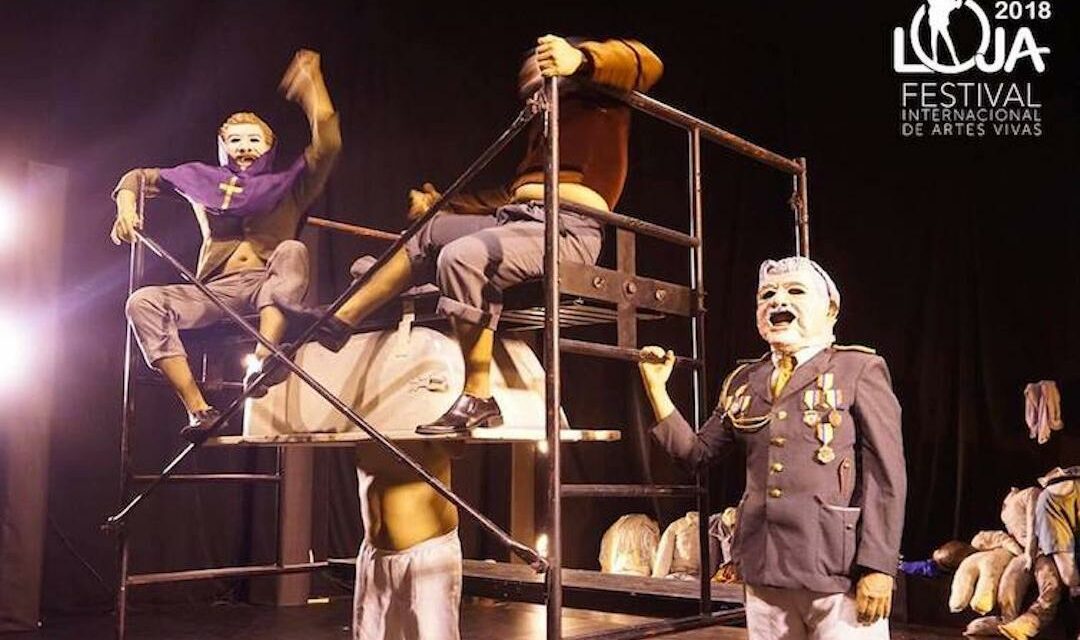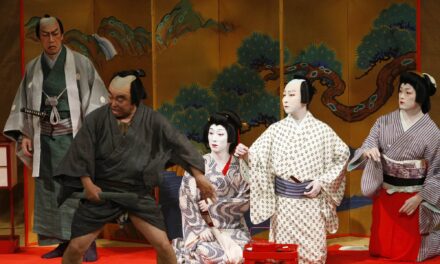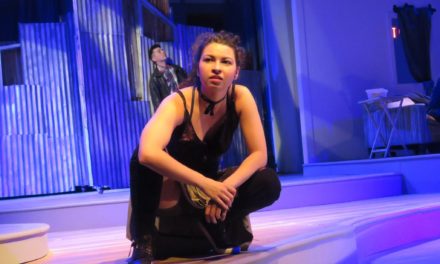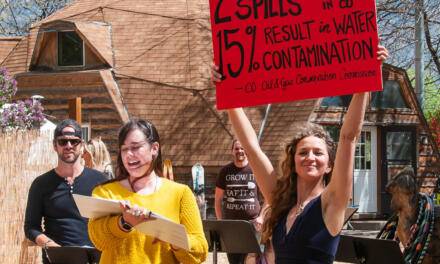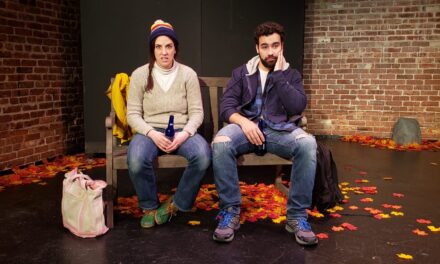The third edition of the Festival of the Living Arts of Loja (FIAVL), the southernmost Ecuadorian province, took place November 15 through 25, 2018. This festival creates two atmospheres, the “Inn” and the “Off,” each with specific characteristics. The “Inn” was directed by Roberto Sánchez and sponsored by the Ministry of Culture, and the “Off” was directed by Santiago Carpio, from the Municipality of Loja. The main stages of the Inn were the Benjamin Carrión National Theater, the Bolívar Theater, the Alfredo Mora Reyes Cultural Center and the Casona. There were also shows in parks, streets, and squares, for example, the Santo Domingo, Plaza Central de Loja, Plaza San Sebastián, Plaza de San Francisco and Plaza del Valle. The “Off” instead filled the streets with activities, some held in parks and squares. We, the spectators, lived in streets full of experimental and traditional musicians, street theatre shows and children coloring the avenues with chalk paintings.
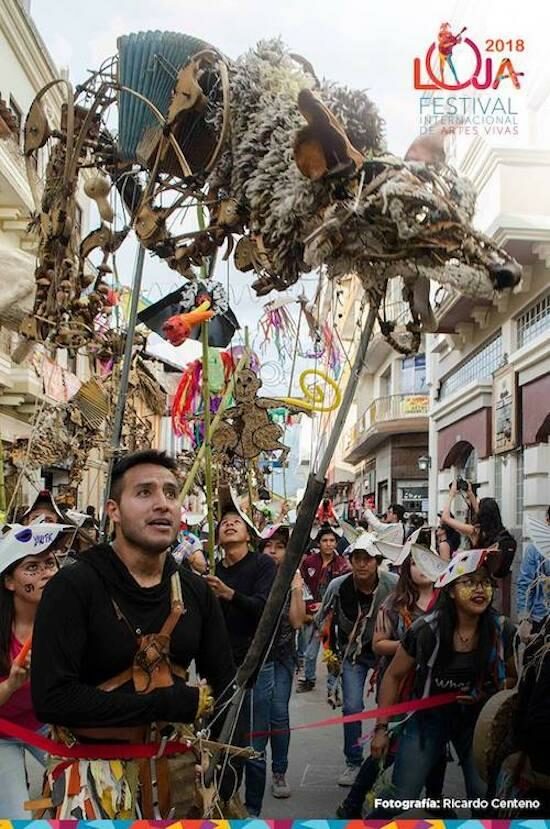
Las bestias danzan.o el sigiloso conjuro de lo salvaje. Exhibition space, children’s and youth workshop and itinerant intervention. La Liga Teatro Elástico, México. Reprinted with permission by the Loja 2018 festival.
All this activity reflects a city that opens its borders and wants both to publicize the living arts and to create a knowledgeable and interested public. The latter is confirmed by the creation of the Festival School and the presence of creative processes at the university level (Teatro Juvenil), thanks to the contributions of the Ministry and the University of Loja. Through these pedagogical activities, the festival promotes participation with the inclusion of other provinces of Ecuador such as Esmeraldas, Manta, and Guayaquil. According to Roberto Sánchez, the festival has worked with Afro populations, with children and adolescents, with people deprived of freedom, and with community theatre and inclusive theatre. As a result of this effort during the festival, there were more than 1,500 artists in squares, parks and theatres and more than 200 shows (personal interview).
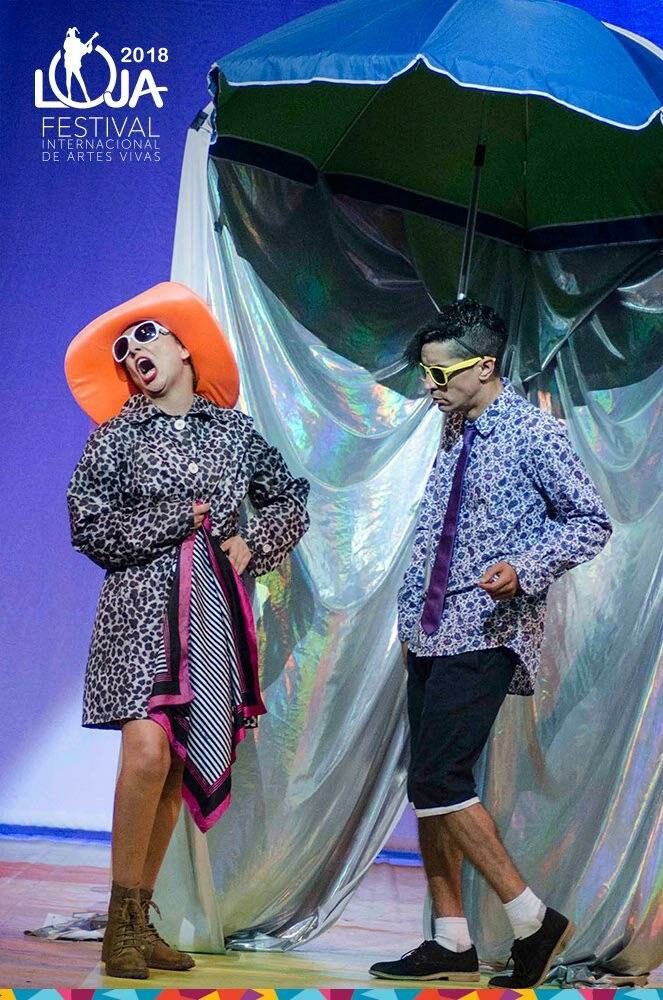
Othelo. Gabriel Chamé Buendía. Argentina. Reprinted with permission by the Loja 2018 festival.
On the other hand, the “Off” promoted the traditional street called Bolivar, artistically decorated, as a showcase for various national and foreign arts.
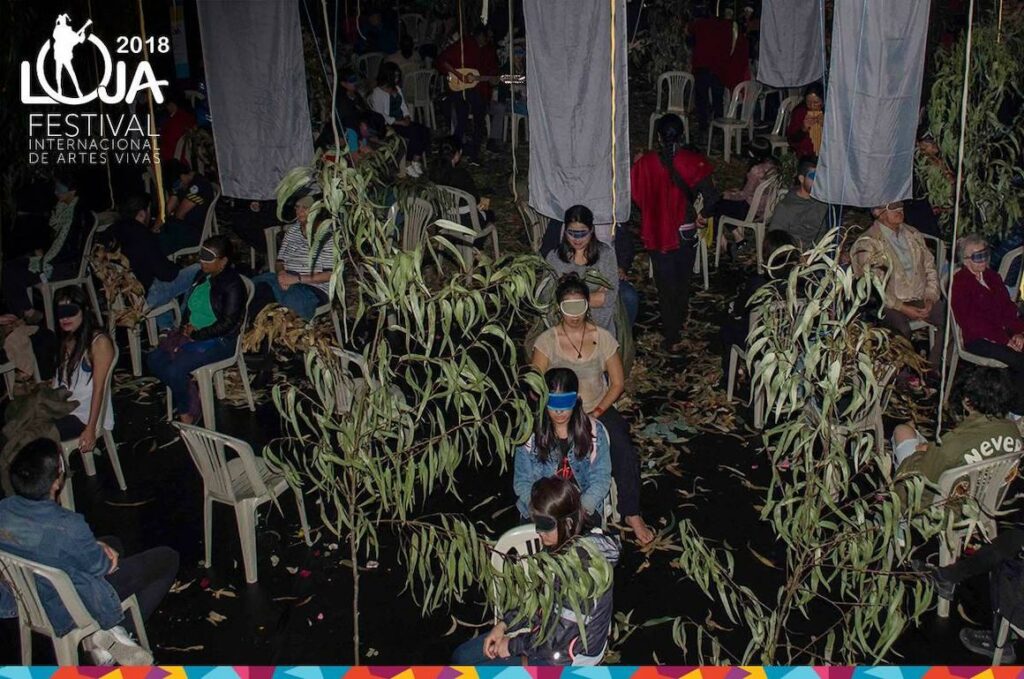
Puruwa. Theatre for the senses. Confundamiento. Ecuador. Reprinted with permission by the Loja 2018 festival.
As part of the “Inn”, three co-productions were presented. Sangurimas (Malayerba de Quito, Muégano Teatro de Guayaquil, and La Trinchera de Manta) was the greatest achievement of this FIAVL, creating a flexible and non-institutionalized conceptual meeting space. The other co-productions were Línea y contorno de un abismo (Compañía Nacional de Danza, directed by Laura Aris) and Espacio me has vencido (directed by Klever Viera). The three productions have a common characteristic: the generation of productive dialogue between literature and the performing arts.
The program included the presentation of works by 12 international groups, among them the National Theater Company of Mexico, the Teatro Cenit of Colombia, La Colmenita de Cuba, the Compagnia TPO of Italy and the Los Angeles Taiko Ensemble of Japan. Among the most outstanding foreign works were Kamchátka, from the company of the same name (Spain); Othello (Argentina); Antigona in Exilium (Colombia-Ecuador); Mucho ruido por nada, from Teatro La Plaza (Peru); Cualquier Mañana, from Tríptico (Spain); and Danse des Cariatides (Retouramont, France). The Mexican production Las bestias danzan (The Elastic Theater League, Mexico) deserves special mention. The group had already given a workshop during the previous days where young attendants learned how to make theatre masks that they used to participate in the performance and were integrated into the street caravan. Also from Mexico came El Enemigo del Pueblo, from the National Theater Company of Mexico.
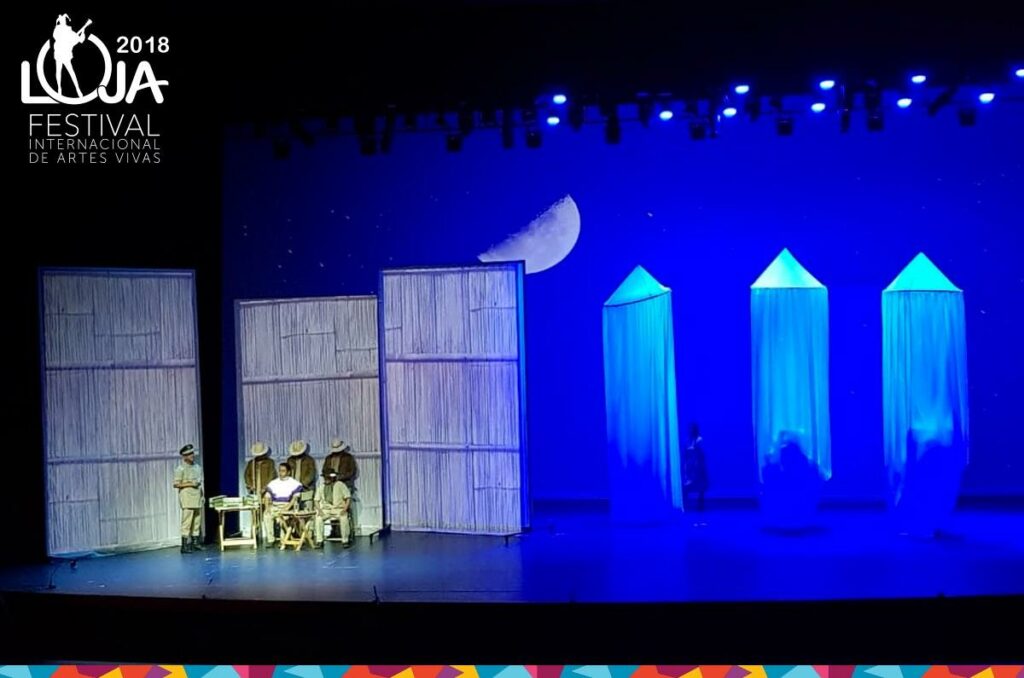
Sangurimas. Homage to the Ecuadorian writer Pablo Palacios. Co production of Malayerba (Quito), Muégano Teatro (Guayaquil) and La Trinchera (Manta). Reprinted with permission by the Loja 2018 festival.
On the other hand, in this third edition, the strengthening of the local was achieved with a significant presence of Ecuadorian theatre. As a result, the University of Loja requested the formation of a performing arts career. Eighteen Ecuadorian groups presented their productions, among them Confundamiento (Puruwa), Rama de Plata (Venciendo la cordua), Project Coyote (La soledad de Susana San Juan), El Derrumbe Colectivo Teatral (Bitácora para volar), Cactus Azul Arte Escénico (Turbulencias), Arawa Theater (Celeste), Zero no Zero Theater (Medea llama por cobrar), and La Fábrica cuerpo-expacio (Polvo).
The FIAVL is more than a festival. Its ultimate purpose is to contribute to the development of the region through the promotion of art and the revitalization of the economy; the theme of the festival was “Frontier,” alluding to the purposeful integration of the international production with the national production.
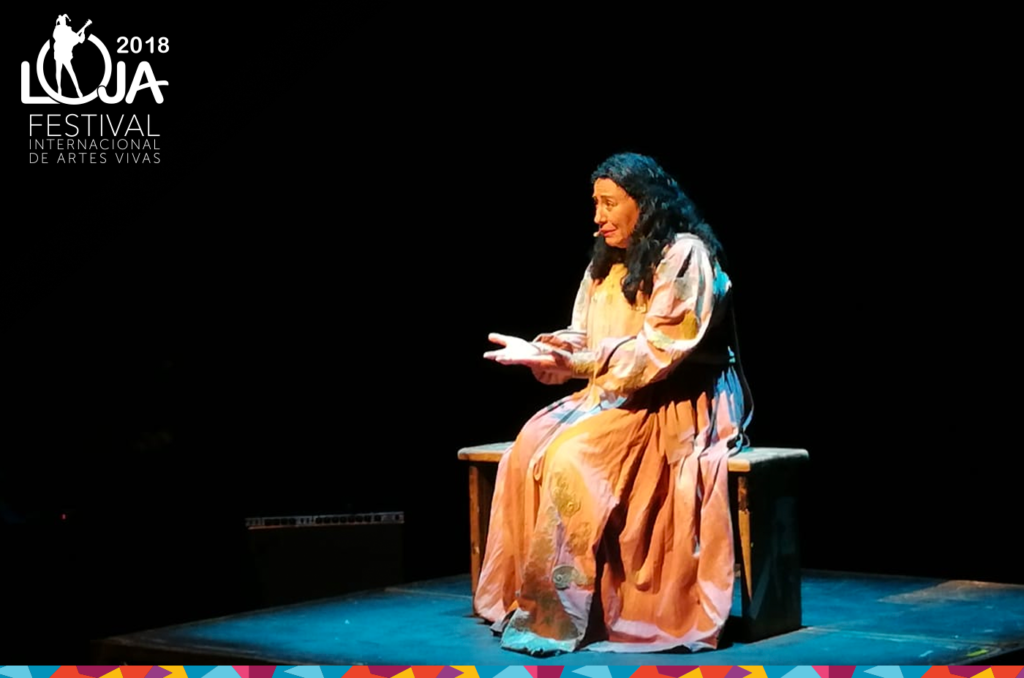
Medea llama por cobrar (Medea call collect). Zero no Zero Teatro. Ecuador. Reprinted with permission by the Loja 2018 festival.
The festival in its “Inn” component, supported by the Ministry of Culture, is a platform for management and application of public policy. As its director, Roberto Sánchez, affirms, this edition of the FIAVL proposes to construct policies for articulating the public, the international scope and the growth of the national sector. According to Sánchez,
“It is a festival that seeks to be at the service of people and artists initiated by the artistic debate . . . an innovative society has to be creative” (personal interview).
Loja’s Festival of the Living Arts is thus much more than an event. As Sanchez affirms, the processes of residence and co-production are fundamental to creating a space in which dialogue takes place and that enriches both audiences and local theatre professionals. Within this scope, the educational component was fundamental; several workshops were given, including one on inclusive theatre, led by Roberto Sintes, from Spain, and one on community theatre, led by Agustina and Esteban Ruiz Barrea, from Los Pompapetriyasos group, in Argentina.
The uniqueness of this festival deserves our special attention for its vivid streets, for the diversity of productions both in the traditional scene and in the open spaces, and for the presence of a variety of origins, styles, and aesthetics. The FIAVL is a window onto the worlds of both Ecuadorian and world theatre. It is a festival with a personality that is distinguished by openness, enthusiasm, and above all the variety and richness of the proposals and whose achievements last well beyond the festival days. It aims towards a future with a knowledgeable audience and the production of a better theatre.

Línea y contorno de un abismo. Coproduction of the Festival (FIAVL), Laura Aris and the Compañía Nacional de Danza. Reprinted with permission by the Loja 2018 festival.
This post was written by the author in their personal capacity.The opinions expressed in this article are the author’s own and do not reflect the view of The Theatre Times, their staff or collaborators.
This post was written by Lola Proaño Gomez.
The views expressed here belong to the author and do not necessarily reflect our views and opinions.

